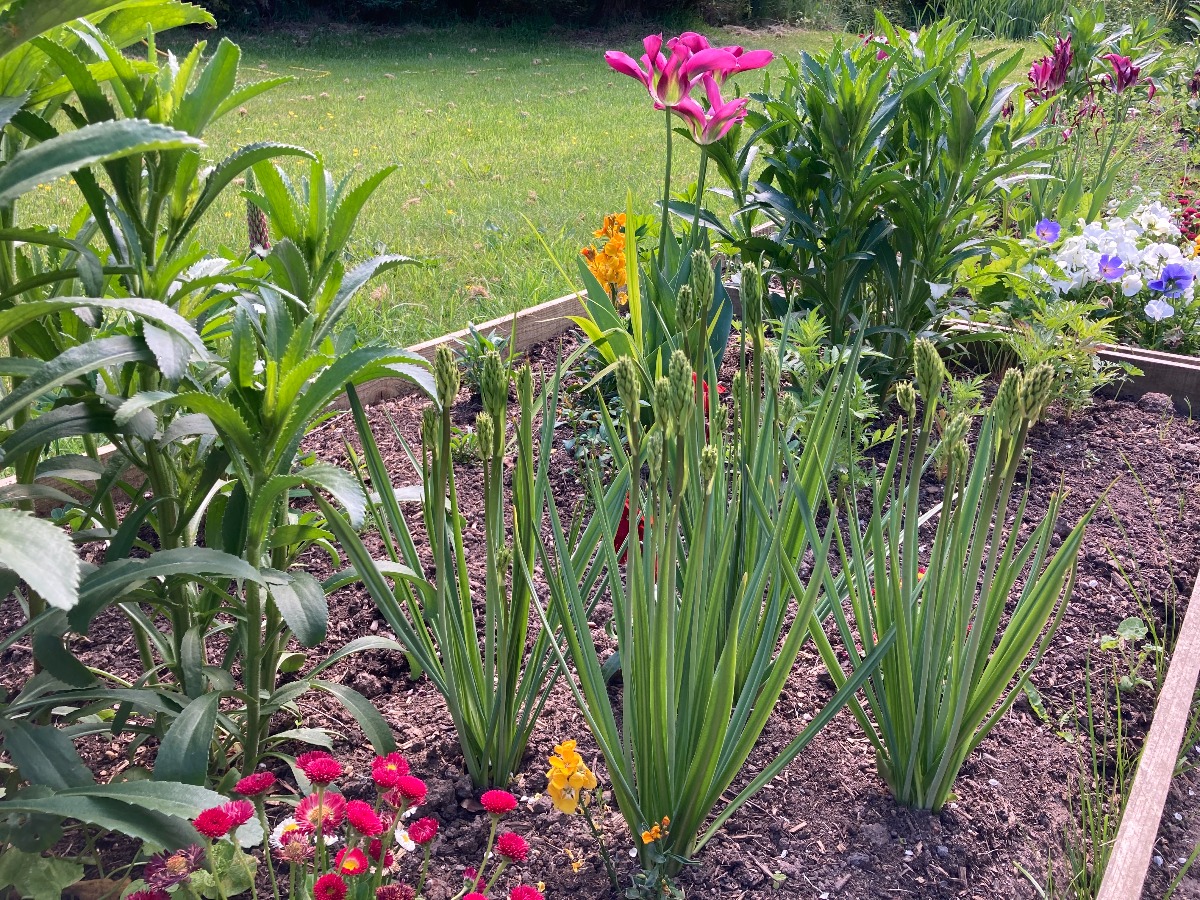As Summer 2022 drew to a close and the almost instant no-dig border had provided extra colour I had no hesitation in deciding to extend it. It hadn't all been plain sailing. Due to the slight slope some of the soil and compost slid and wash out onto the paved drive, and the grass round the edges was difficult to cut and manage. But surely they were problems I could overcome. So what next?
In November, with a fresh delivery of top soil and plenty of potting compost from the summer to be reused, I persuaded my other half help me build a wooden frame - well two of them - one to surround (and extend) the original bed and one for a new bed. I hoped they would help contain the soil, and they have to some extent, but they were intended as temporary while I wait to see if planting and time will stabilise the ground so that they can be removed. Using the same sizes we use to frame our vegetable gardens there are now two 4.8m x 1.2m sections.
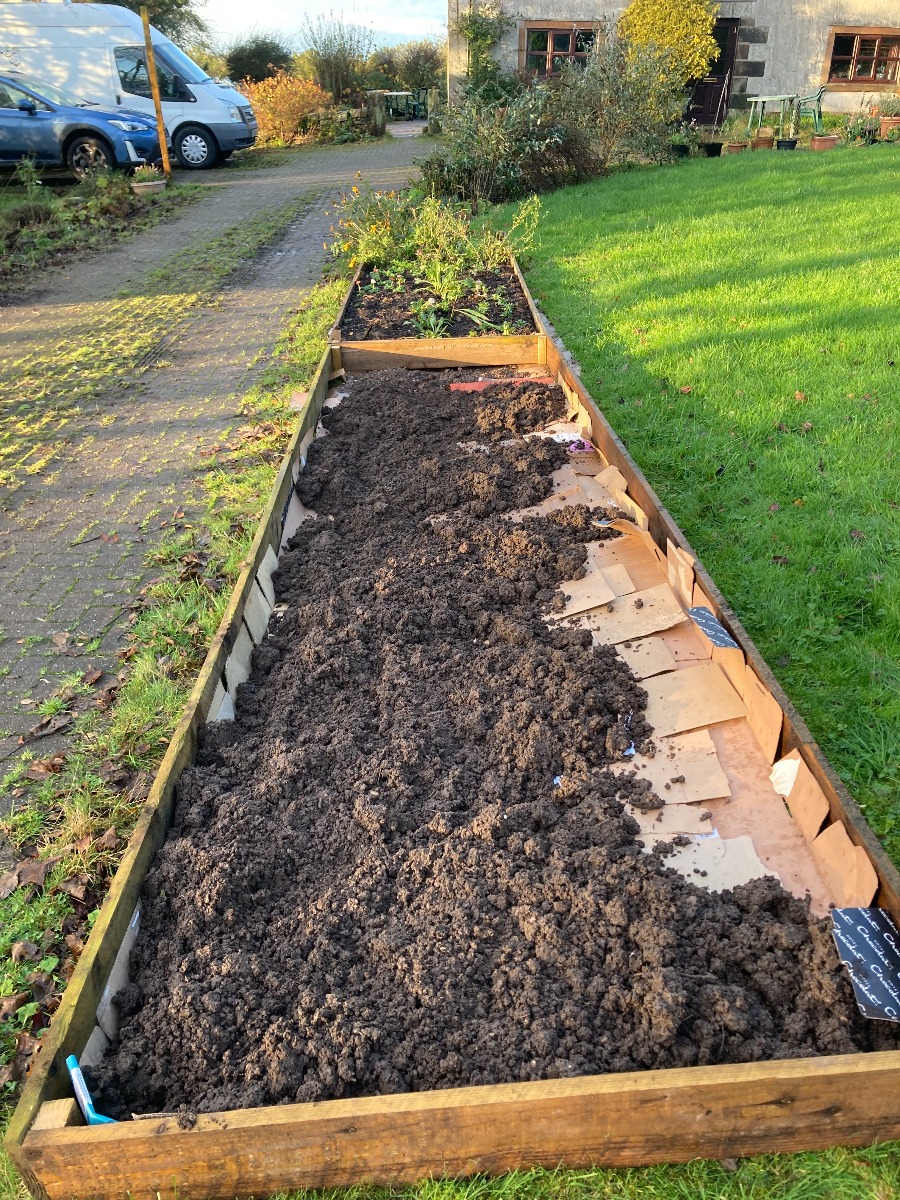
The frames were laid out and the ground covered with flattened cardboard delivery boxes, with and extra layer of smaller boxes (donated by a friend) at the edge to try to form a sort of lip to prevent soil leaching out. The most difficult part was removing the strips of packing tape and plastic labels from the large boxes before they could be used. Barrowing in the top soil was relatively easy, although covering the area with approximately six inches was a time consuming task. To lighten the soil and make it easier to plant bulbs and plug plants we dug in compost from pots and hadopots in which we had grown chillis, tomatoes and aubergines over the summer.
The bed was ready for Autumn planting. In addition to bulbs and plug plants I sourced from a nursery I also used roots from existing perennials elsewhere in the garden that would otherwise have ended up on the compost heap after thinning them out. When it was finished it looked sparse but I was expecting great things later. For good measure I mulched with woodchips I'd made a year or so ago from pruned and thinned out branches and some home made leaf mould.
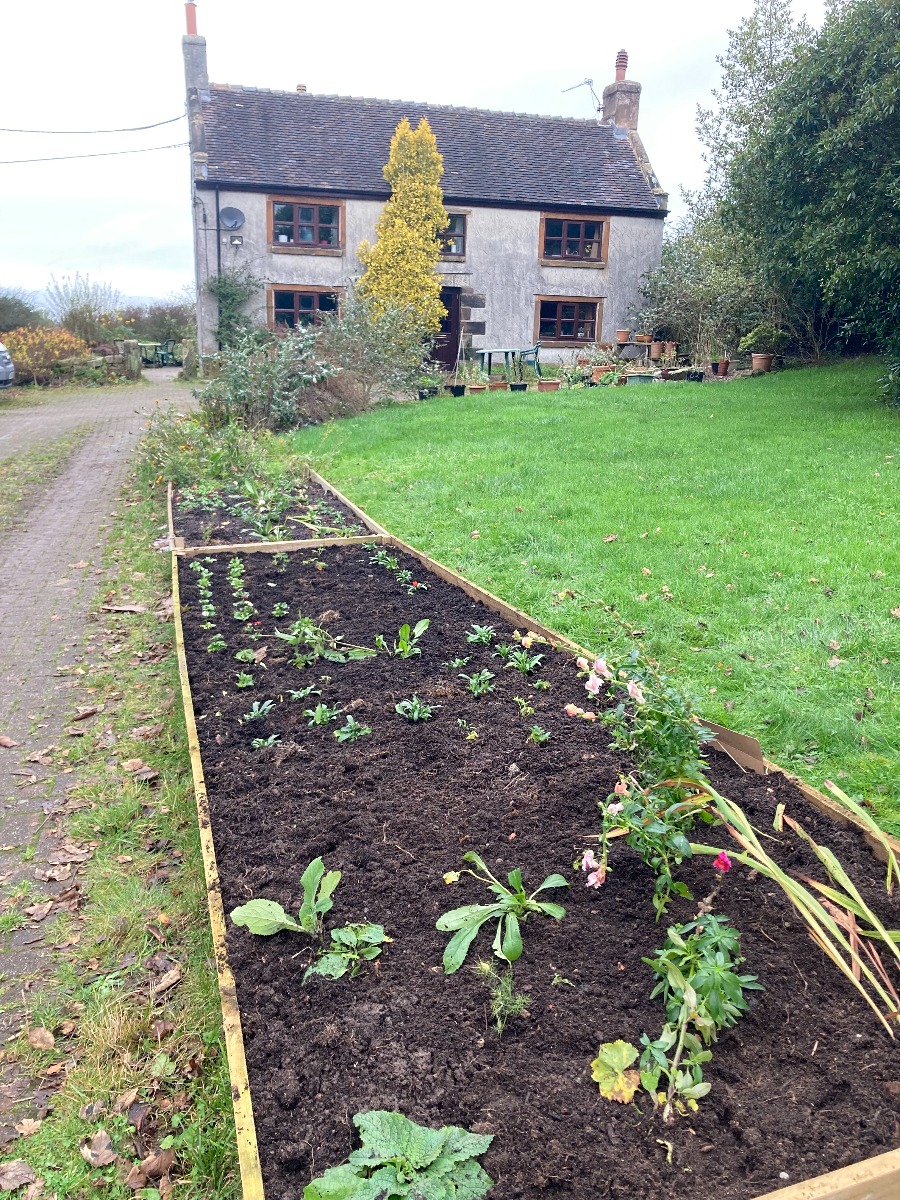
Newly made no-dig bed, newly planted. November 2022.
In new year 2023 I sowed flower seeds in the greenhouse and indoors. I am hopeless remembering their names, selecting them entirely on the basis of their picture, the height they were expected to reach and whether they were annuals or perennials. In the Autumn I kidded myself there was a plan and method to my lay out and selection of plants. By late Spring as I planted our my home grown seedlings all pretence at planning had gone. But I was already getting colour and the tulips were wonderful.
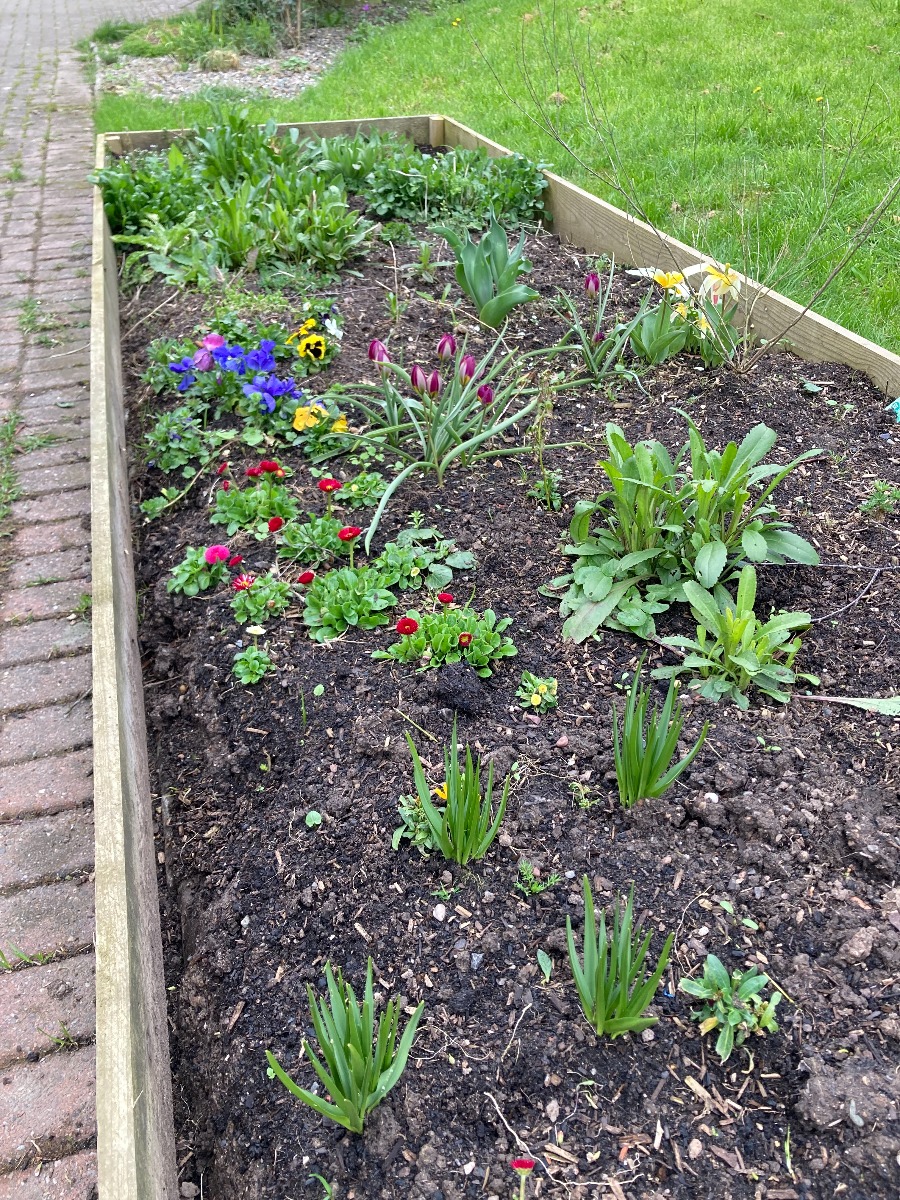

By April there is colour
The beds have provided constant colour almost all year, although they are now a muddle of plants, some battered by the recent rain storms and the daisies dominate. I sowed them as seeds in late spring 2022 and hadn't thought they'd come to much, but I split up the flowerless clumps and planted them at intervals across the newly laid beds. This year they have been spectacular. I am also delighted that most of the lupins I planted as plug plants survived and flowered. All my previous attempts to grow lupins had ended in failure and many overfed greenflies. This year I noticed that the garden has been visited most mornings by birds, including magepies. Maybe they are eating the bugs and slugs.
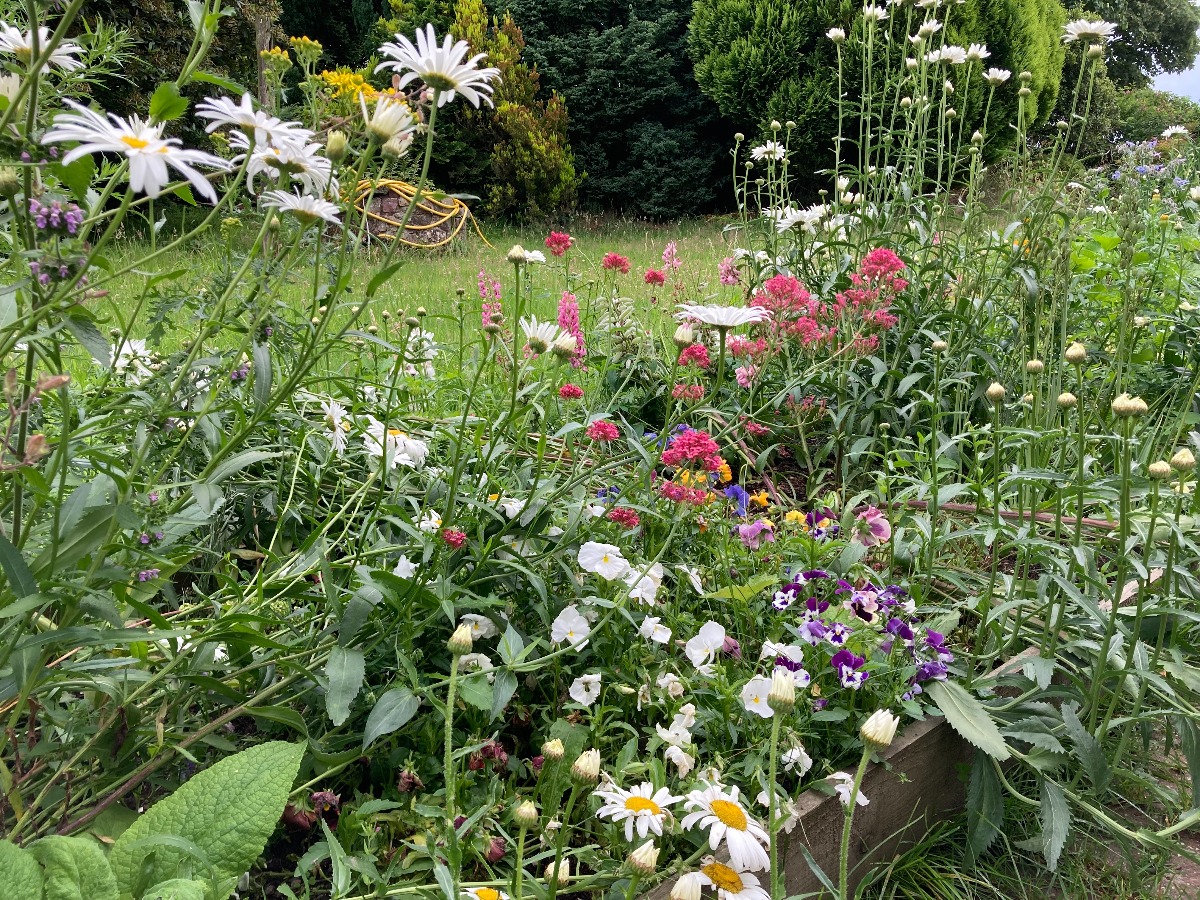
July 2023 and the daisies have taken over
I am still having trouble with the grass around the edge, especially along the paved edge. But it's tolerable and that can be something to solve for next year.
The question now is: shall I add another bed?
